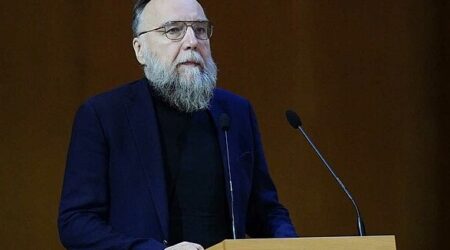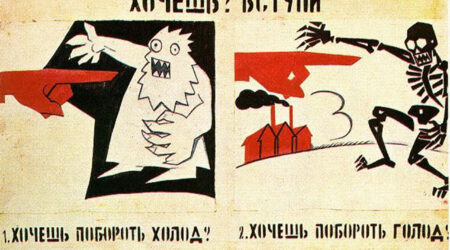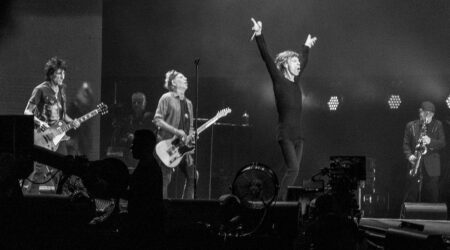Two riders
I met Samir only three days ago in the dusty Chilean town of San Pedro de Atacama, but somehow he managed to convince me it would be a great idea to explore the surrounding Atacama desert on a motorcycle. I’ve never been on a motorcycle before, but his resume sounded bulletproof – he’s been riding […]
I met Samir only three days ago in the dusty Chilean town of San Pedro de Atacama, but somehow he managed to convince me it would be a great idea to explore the surrounding Atacama desert on a motorcycle. I’ve never been on a motorcycle before, but his resume sounded bulletproof – he’s been riding since he was twelve, took a bike through a couple dozen countries in Europe and Asia, and despite last year’s crash in Mexico that almost left him one-legged, was ready to explore South America on two wheels.
 I immediately said yes. I think it was the crash bit that convinced me. I mean, now he’d be extra careful, right? Besides, who wouldn’t entrust their life to a short, cocky Indian guy from Canada they just met three days ago at a hostel?
I immediately said yes. I think it was the crash bit that convinced me. I mean, now he’d be extra careful, right? Besides, who wouldn’t entrust their life to a short, cocky Indian guy from Canada they just met three days ago at a hostel?
There was also the red leather jacket. I bought it for myself as a parting gift back in Buenos Aires the week before and now was feeling its weight in my already bulky luggage. Riding on a motorcycle through the desert was a pretty good excuse to finally put it on.
It was mid-day on Easter Sunday when we met our guide, Juan, a tall blond 31-year-old Chilean, who took us to his headquarters – a.k.a. his house – just outside of town. Juan started his motorcycle tour company, On Safari Adventures, two years ago with his best friend and his cousin (tall, dark, with a perfect smile that apparently works like a charm not only on single women, but also on customers).
Equipped with a padded jacket and an extremely tight-fitting helmet that popped like a cork onto my head, I gracefully hopped on the back of a black BMW 650GS, casually known as the Dakar bike, and clasped my hands around Samir. As we turned out onto the highway and started picking up speed, it dawned on me that there are no seatbelts on a bike.
I know that’s pretty obvious, but somehow I didn’t quite get the full meaning of it until I realized the clasp of my hands around my riding partner was the only thing between me and sure death. It also dawned on me that I was not carrying any documents and that my new friend didn’t even know my last name. Smart… But there was something so romantic about anonymously dying in a Chilean desert from a motorcycle crash while wearing a tight red leather jacket that I relaxed and let the wind run through me.
 I couldn’t really stress much anyway because when you’re riding 100km an hour through rocky desert canyons, the wind is so loud you can’t hear yourself think. Your nostrils become dry wind tunnels and your neck hurts from trying to hold your helmet-head from getting ripped off. And that’s in the back. Apparently, the front rider gets a more intense experience.
I couldn’t really stress much anyway because when you’re riding 100km an hour through rocky desert canyons, the wind is so loud you can’t hear yourself think. Your nostrils become dry wind tunnels and your neck hurts from trying to hold your helmet-head from getting ripped off. And that’s in the back. Apparently, the front rider gets a more intense experience.
After leaving San Pedro de Atacama in the back mirror, we were immediately in no man’s land. The smooth highway first ran through the blasted, copper-rich canyons that hugged the road like in one of those racing videogames with uber-creative landscaping. Then, we emerged onto what I can only describe as the surface of the moon. Or maybe Mars. I haven’t been to either and was never really the Science Channel watching type.
Jagged canyons rose from the dark barren earth that visibly curved into a row of snow-capped volcanoes closing in on the horizon. The sky was close and intensely blue. The only thing moving in this landscape was Juan, dominating the perfectly snaking road on his bike about 50 meters in front of us. My ears began to feel congested – we were climbing, and climbing fast.
After about an hour Juan signaled to us and we turned off the highway onto a wide dirt road with a sign for Rio Grande.
Now, we were really in no man’s land. There weren’t any other vehicles or people. It was just us, the road and the wind. I was starting to see the appeal of the two-wheel lifestyle.
We stopped to take a breather and stretch. When I got off the bike, I realized my left hip and right wrist were sore from leaning left for an hour. The ever-thoughtful Juan offered us a mix of nuts and raisins that’s a popular snack in northern Chile and told us he was sorry the highway part of the journey was so boring. Boring?! Well, someone sure has been living here for too long.
“Just wait until our next stop in the Rio Grande village,” he said, beaming. “You will see!”
 We continued on the dirt road through endless open landscape that felt like a moon crater, occasionally slowing down on the gray sandy gravel portions that, as Samir explained, can make the bike slip. Then, we entered a canyon where the road narrowed and the turns became sharper until, completely out of nowhere, the canyon opened onto an enormous valley cut in half by the road heading straight for the giant cone of the volcano towering above.
We continued on the dirt road through endless open landscape that felt like a moon crater, occasionally slowing down on the gray sandy gravel portions that, as Samir explained, can make the bike slip. Then, we entered a canyon where the road narrowed and the turns became sharper until, completely out of nowhere, the canyon opened onto an enormous valley cut in half by the road heading straight for the giant cone of the volcano towering above.
Here, the road suddenly became paved again and we passed a giant billboard showing road workers with a sign, “Better roads for better Chile”. We soon passed the road workers themselves, painting the lane divide and cheerily waving to us, the only visitors they must have seen all day.
You know a country is getting rich when a dozen men pave a road through nowhere to a 100-person village. But when we got the first glimpse of the Rio Grande village, I knew why. It was a scenic green oasis that sits on the small river bank in the bottom of a very deep canyon. Before entering town, we passed by a woman in a traditional colorful skirt and hat peacefully herding fat sheep on the riverbank. It was one of those quiet, idyllic places where loud motorbike visitors is an event. Weathered old men sat in front of their mud brick houses and waved hello to us. Juan said he used to teach English here and knew all the villagers.
As we walked around the quiet streets, he told us how after 8 years in the tourism industry, he decided to start his own business and how he hopes the Dakar race, which will pass through Atacama in July, will put this desert on the bike aficionado map. Then somehow the conversation turned to his girlfriend, a 21-year-old student in Santiago. They have been seeing each other once a month and this weekend decided they should try a less committed, more open relationship.
“We want to keep our feelings, but just be more flexible,” he said, blushing a little.
Samir and I shook our heads with skepticism.
“In my experience, that’s the first step toward the end,” said Samir, who has just finished filing the paperwork for his divorce.
I had to agree. “Let’s try separating for two months” was what my ex-husband and I said back in December to avoid uttering the dark, shame-filled “divorce”. And now, three months later, I was riding through the Chilean desert on the back of a motorcycle with a man I barely knew.
Juan nodded, but ultimately I know every man has to make his own mistakes.
It was time to head back. The sun was creeping closer toward the horizon and riding through the cold, starry night was not an experience I signed up for. We climbed back out of the oasis, along the river canyon, onto the open plane, past the billboard, through the dirt road, out onto the highway where my ears popped several times as we made our way back towards civilization.
As we drove, I watched the shadow of two people on a bike dance along the road as the orange volcanoes glistened in the setting sun. It was hard to believe one of the shadows was me. It could have been old lovers making their way around the moon. Or, like in our case, two anonymous souls at a crossroad riding through nowhere, hoping to beat time itself.
Photos by Sasha Vasilyuk.
Sasha Vasilyuk is a former newspaper journalist who just came back from her own 9-month version of “Eat, Pray, Love,” which taught her that anything is possible when you’ve got an open road and an open heart.
Sasha Vasilyuk





